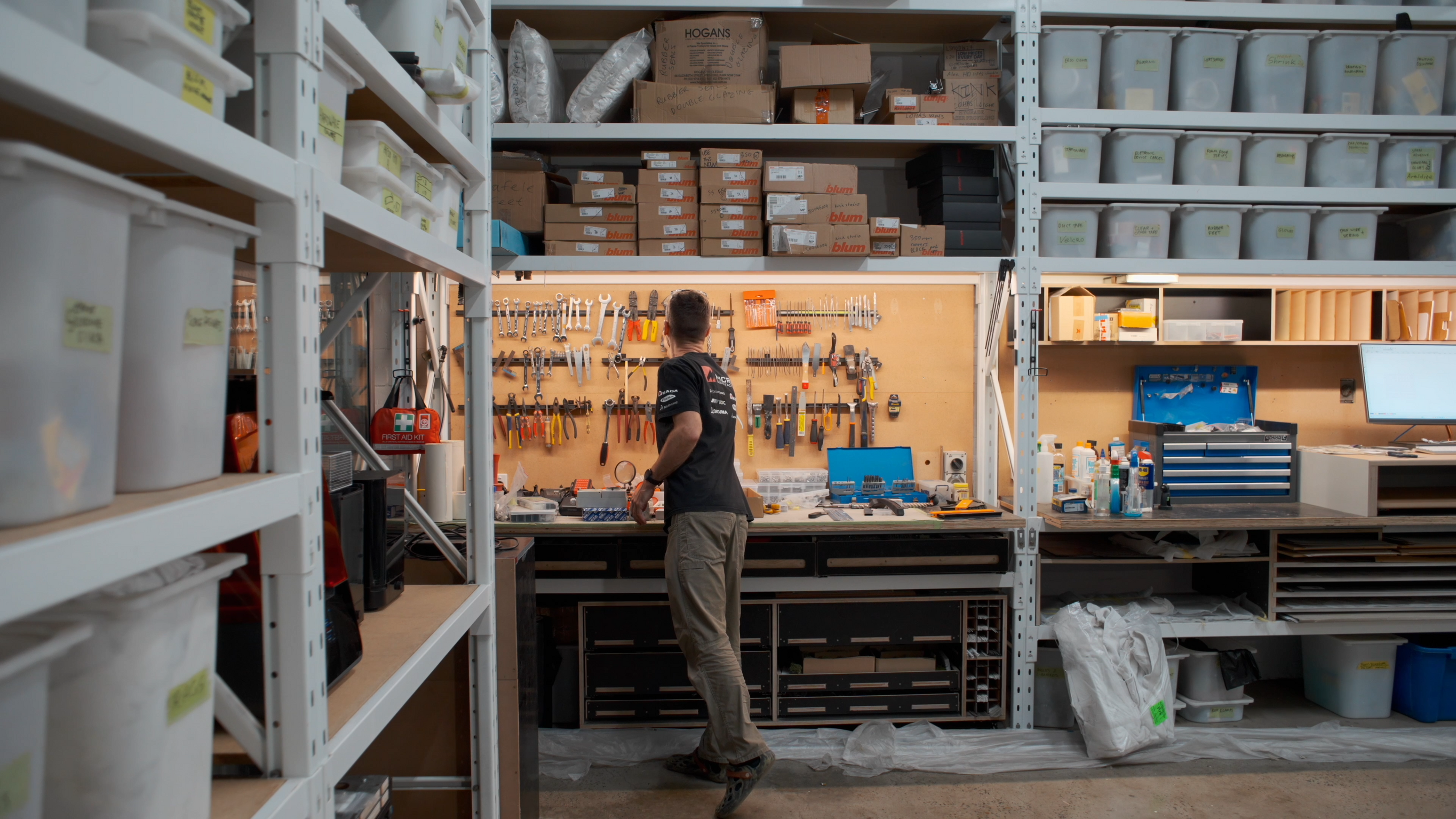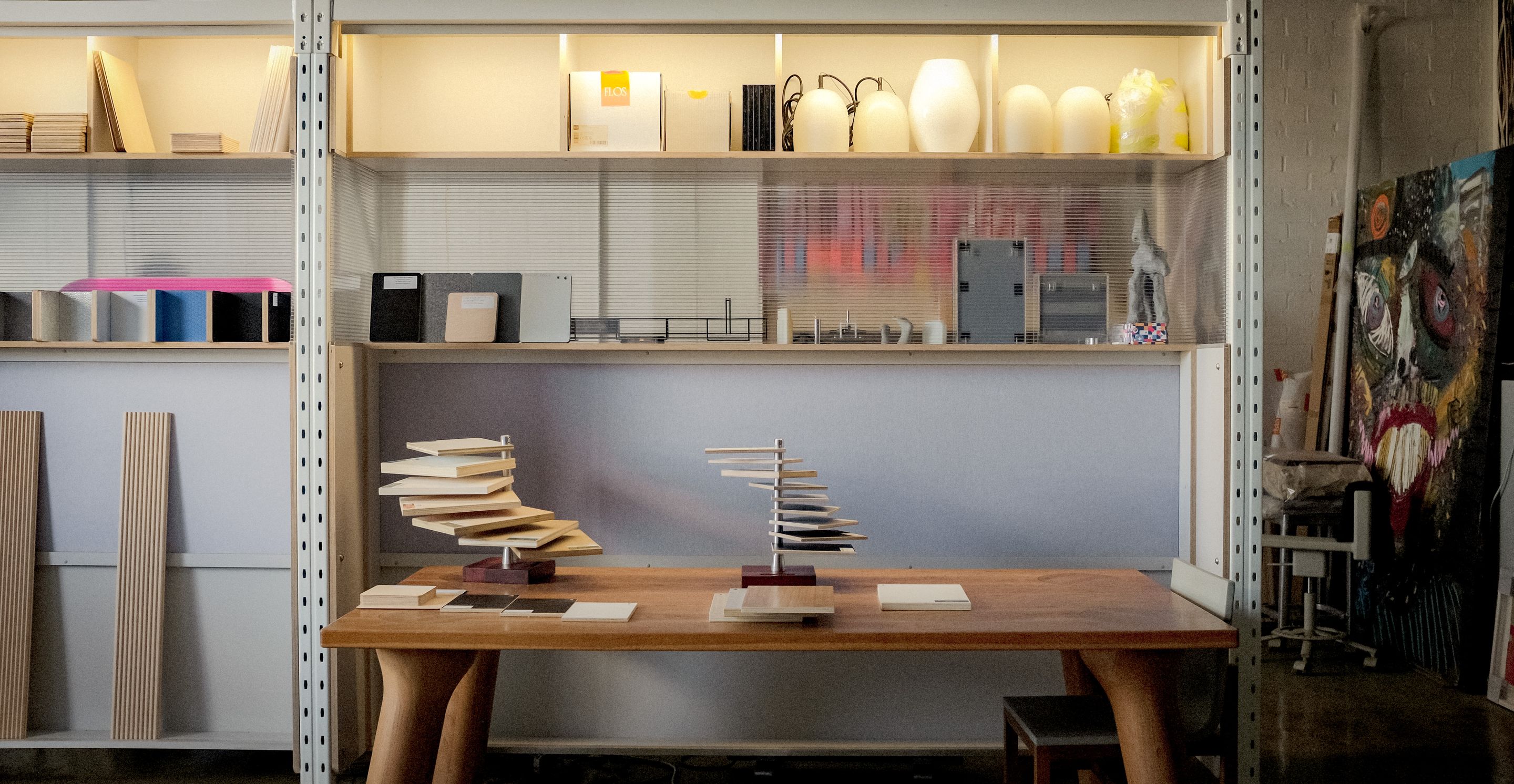In the ever-shifting landscape of design, where labels can cement a creator’s place in history, Alex Kashin stands apart, quietly sidestepping the spotlight of “artist.” Alex Kashin co-founded Daast Design after winning the 2013 Spirit of Youth Award for ‘Craft and Object Design,’ judged by Marc Newson. It was then that Kashin began making his mark with a hands-on approach. Today, that early promise has evolved into a singular practice he defines with precision: “Designer is the closest description I can give,” he says. “I wouldn’t call myself an artist at all.” For Kashin, design isn’t about self-expression—it’s about solving problems, a passion ignited in childhood and refined through years of relentless exploration.
That instinct for problem-solving traces back to his father, an engineer whose ingenuity left an indelible mark. “He’s the most outstanding problem-solver I know,” Kashin reflects, recalling a youth spent watching him tinker, repair, and invent with a creativity that turned the everyday into something extraordinary. From those moments—fixing a truck, building a garage—sprang Kashin’s own drive, a blend of technical rigour and an appreciation for objects that marry form and function. “That’s where it all comes together for me,” he says, embracing a dual identity: more engineer than traditional designer, yet captivated by the beauty of the well-made. It’s a thread that runs through his career, from his early days crafting furniture in Melbourne to his current, more introspective work.

Kashin’s trajectory took a decisive turn when he co-founded Kink Studio during his second year of an architectural degree. What began as a student venture—born from a desire to move beyond theoretical sketches—became a crucible for his ideas. “It’s great to have concepts in your head,” he says, “but having a physical prototype is more valuable.” Fabrication offered a proving ground, a way to test an idea’s mettle and decide its fate. Back then, as Vogue Living noted in 2015, he was part of a new wave of Australian talent redefining design with a global sensibility. Now, years later, the reality of running his own studio tempers the idealism. “It’s not as glamorous as people think,” he admits. The work demands consistency, patience, and long hours—a rewarding challenge that has shaped him as much as his creations.
When pressed about a guiding philosophy, Kashin pauses. “I haven’t developed one yet,” he says, wary of the term’s grandeur. “I’m not sure I want to be locked into one” Design, for him, is less about a fixed aesthetic and more about function and process—the twin pillars fuel his practice. He thrives on experimentation, mastering new crafts and uncovering fresh applications for familiar skills. Whether crafting furniture, lighting, sculptures, or prototypes, his aim is unwavering: create functional yet intriguing pieces. “That’s what challenges me every day,” he says, a testament to a curiosity that refuses to settle.
His creative process is rooted in the act of making. “It usually starts with the process,” he explains, though materials often spark the journey, their potential too compelling to ignore. The leap from concept to prototype is swift and exhilarating—“the first 10-15% is fun”—but the true test lies in the gruelling refinement that follows. “After that, it’s proper hard work,” he says, a nod to the endurance required to polish a rough idea into something lasting. It’s a labour that calls for more than design flair; it demands fabrication skill and a dogged persistence that echoes his early days tinkering alongside his father.
Those roots run deep. Memories of building—a garage, a sauna, or wrenching on 4x4s with his dad—mark his earliest forays into making. His first real plunge into design came later, renovating his parents’ apartment in Russia while studying economics. “I did two for them,” he recalls a humble start that hinted at the path ahead. Today, work remains “an endurance exercise,” a marathon where perfectionism stretches the timeline but elevates the result. “The results are generally gratifying,” he says, a quiet pride cutting through the toil.

Marketability isn’t his north star. “I don’t think I do,” he says when asked, pointing instead to the creative power of constraints. “Balance comes from restrictions—a budget, limitations, like a cube with six sides.” He excels within these boundaries, crafting solutions that feel inevitable and inspired. Designing without limits, he argues, is the real challenge: “Where do you start? Why does it even need to exist?” The absence of rules doesn’t free him—it grounds him. “Succeeding in that might make you an artist,” he muses, circling back to his reluctance to wear that crown.
Kashin calls himself a “design introvert,” unfazed by industry trends or buzz. “I do my best work in my own world, resolving problems and tackling limitations,” he explains. Inspiration slips in quietly—everyday moments that stick, slowly building an ever-growing “mental catalogue.” If design were to vanish, he laughs, “I’d probably be a sauna manager—way more relaxed!” Jokes aside, he sees a natural fit in engineering or fabrication, fields where his hands-on drive would continue to flourish.
Over the years, his perspective has sharpened. “Design always needs a purpose,” he says, a truth that’s crystallised with time. “Without it, it’s pointless.” It’s a lesson that anchors his modest ambitions. “I don’t have that kind of ambition,” he says of leaving a grand legacy. “I’m pretty content if my client is happy with what I deliver.” Success, for Kashin, lies in the quiet utility of a finished piece, its existence justified by the satisfaction it brings.
Looking back, he’d offer his younger self a gentle nudge: “Take it slower—your career is a marathon, not a sprint.” The rush to results, he’s learned, can overshadow the process—a process he’s now committed to savouring. “For longevity in design, it’s essential to enjoy the work, not just the outcome,” he says, a guiding light as he looks ahead. That future brims with uncharted projects—complex challenges that promise to stretch his skills further. “I want each one to push me,” says Kashin, a designer defined not by acclaim but by the steady, purposeful pursuit of what’s next.